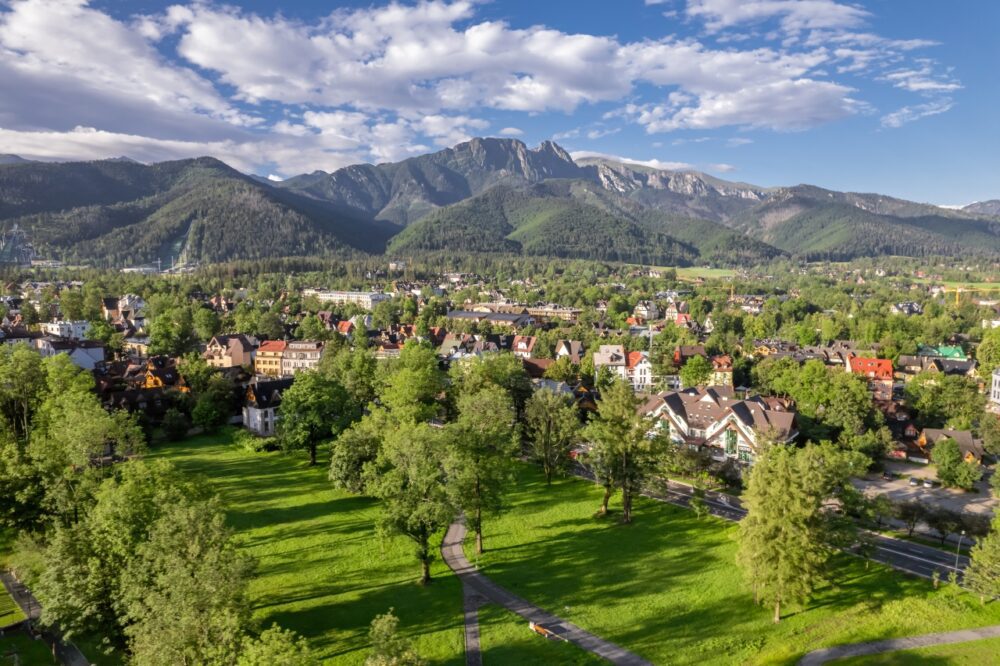
Is Zakopane worth visiting? Absolutely! The first time I visited Zakopane, I was blown away by its postcard-worthy views of the Tatra Mountains and its cosy, alpine charm. Known as Poland’s winter capital, Zakopane is a haven for outdoor enthusiasts and anyone who loves a breath of fresh mountain air. Whether I was hiking to a crystal-clear lake or enjoying a steaming plate of pierogi in a rustic wooden chalet, Zakopane felt like the perfect escape from the hustle and bustle of everyday life.
Nestled at the foot of the Tatra Mountains in southern Poland, Zakopane is the country’s go-to destination for skiing in winter and hiking in summer. But there’s more to it than just outdoor adventures—the town itself is full of character. Stroll along Krupówki Street, with its charming shops and restaurants, or admire the unique highland wooden architecture that gives Zakopane its distinctive personality. And if you’re a fan of traditional culture, you’ll love the vibrant folk art, music, and hearty highland cuisine that Zakopane is famous for.
But is Zakopane worth visiting for you? In this blog post, we’ll explore the top 10 reasons why Zakopane should be on your travel list, from its stunning natural beauty to its rich cultural traditions. Plus, we’ll share travel tips to help you plan the ultimate mountain getaway. Keep reading to find out why Zakopane is one of Poland’s most beloved destinations.
Table of Contents
Pros – Reasons You Should Visit Zakopane
1. A Stunning Mountain Setting in the Tatra Range
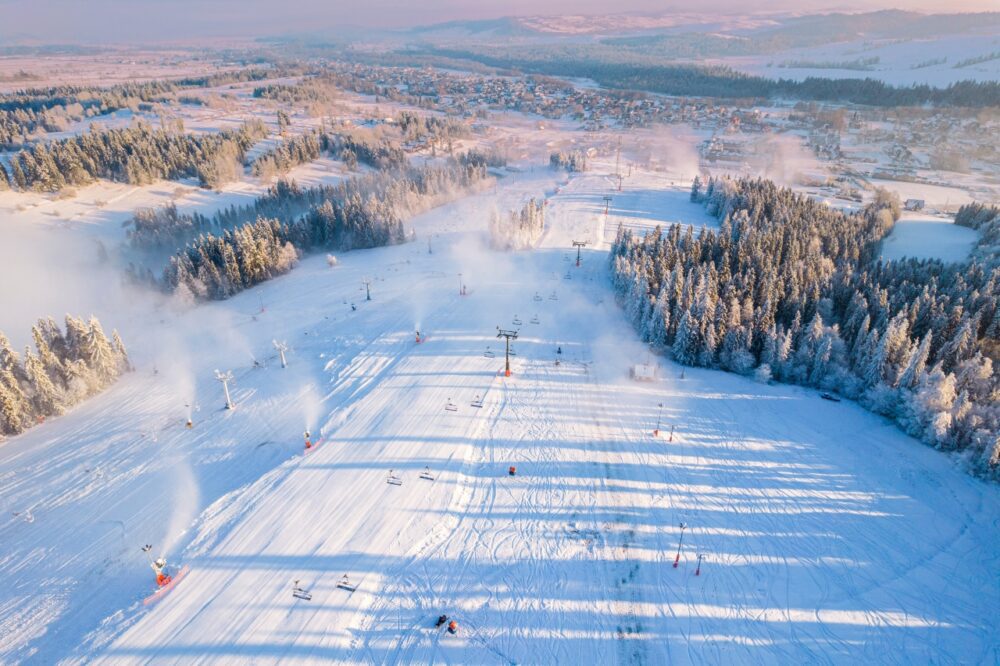
Zakopane is often called the winter capital of Poland, and for good reason. Nestled at the foot of the Tatra Mountains, it offers breathtaking views, fresh alpine air, and endless opportunities for outdoor adventures. Whether you visit in summer or winter, the scenery is nothing short of spectacular.
I arrived in Zakopane on a clear morning, and the sight of the towering, snow-capped peaks in the distance was unforgettable. Unlike some crowded European mountain resorts, Zakopane has a charming, unspoiled feel, with wooden chalets, pine forests, and winding roads leading into the heart of nature. Whether you’re hiking in the summer or skiing in the winter, the stunning mountain landscape is the highlight of any visit.
2. Excellent Hiking Opportunities for All Skill Levels
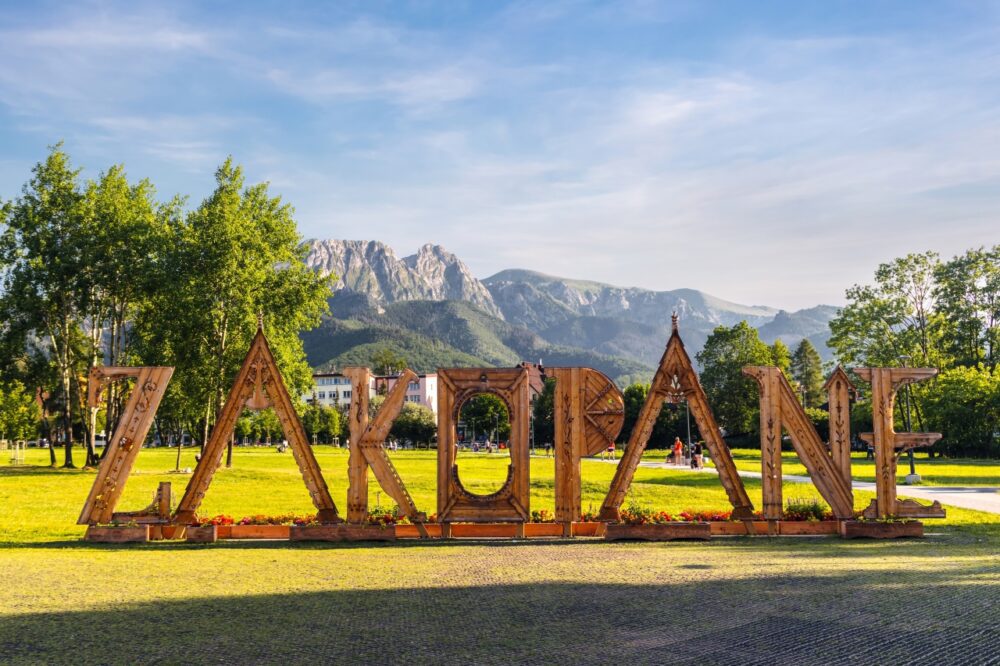
For nature lovers and adventure seekers, Zakopane is a paradise. The surrounding Tatra National Park offers some of the best hiking trails in Poland, ranging from gentle scenic walks to challenging mountain climbs.
I hiked to Morskie Oko, a stunning alpine lake that looks like something out of a postcard. The hike was moderate but incredibly rewarding, with panoramic views of the mountains reflecting in the crystal-clear water. For those looking for a more challenging adventure, trails like Rysy—the highest peak in Poland—offer an exhilarating climb with breathtaking views at the summit. No matter your fitness level, there’s a trail in Zakopane for you.
3. A Perfect Destination for Skiing and Winter Sports
Zakopane is Poland’s premier ski destination, with several ski resorts catering to all levels, from beginners to experienced skiers. The slopes are not as crowded or expensive as those in the Alps, making it an excellent choice for an affordable winter getaway.
I tried skiing at Kasprowy Wierch, which has some of the best slopes in the region, with stunning views of the Tatras from the top. For beginners, places like Nosal and Białka Tatrzańska offer gentler slopes and excellent ski schools. Even if you don’t ski, you can enjoy other winter activities like snowboarding, sledding, and horse-drawn sleigh rides through snowy forests.
4. The Unique Highlander Culture and Traditions
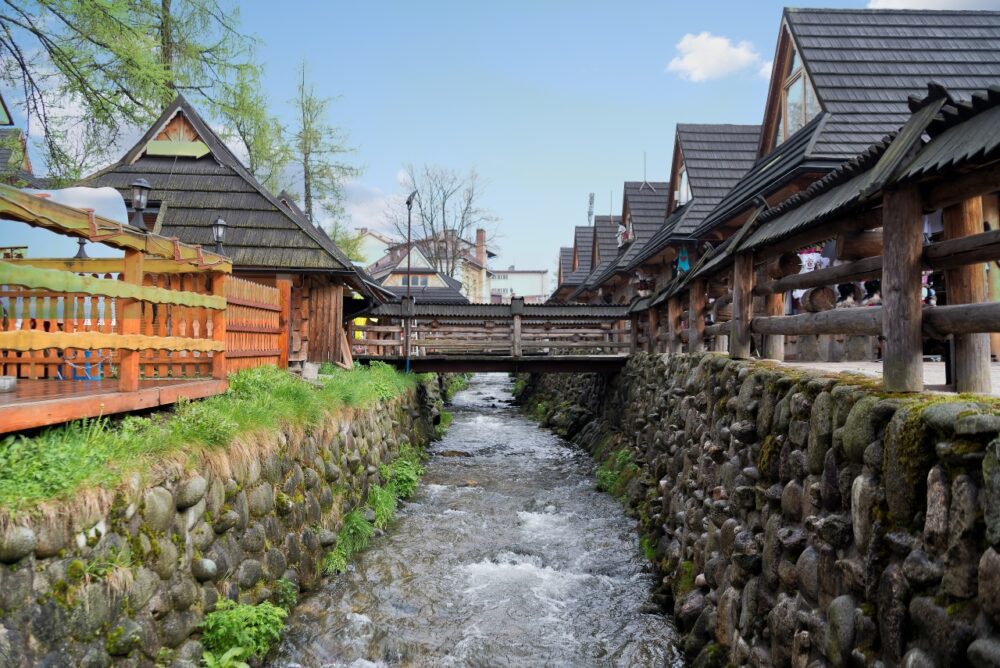
Zakopane is the cultural heart of Poland’s highlander community, known as the Górale. The town has preserved its rich folk traditions, including distinctive wooden architecture, traditional music, and regional crafts.
Walking through Krupówki Street, I saw locals dressed in traditional embroidered outfits, selling handmade wool sweaters, leather goods, and intricate wooden carvings. The town’s unique wooden houses, known as Zakopane-style architecture, give it a fairy-tale charm unlike anywhere else in Poland. If you’re interested in local culture, visiting a highlander folk show or museum is a must.
5. Delicious Regional Cuisine That is Comforting and Hearty
Zakopane’s food scene is a dream for anyone who loves hearty, comforting meals. The cuisine is rich in smoked cheeses, grilled meats, and warming soups, perfect for refueling after a day in the mountains.
I tried oscypek, a smoked sheep’s cheese that is a Zakopane specialty, grilled and served with cranberry sauce—it was smoky, salty, and absolutely delicious. Another must-try dish is kwaśnica, a tangy sauerkraut soup often served with pork, which was the perfect way to warm up on a cold evening. The town is filled with rustic restaurants and cozy wooden taverns where you can enjoy a true taste of the region.
6. The Gubałówka Funicular Offers Incredible Views
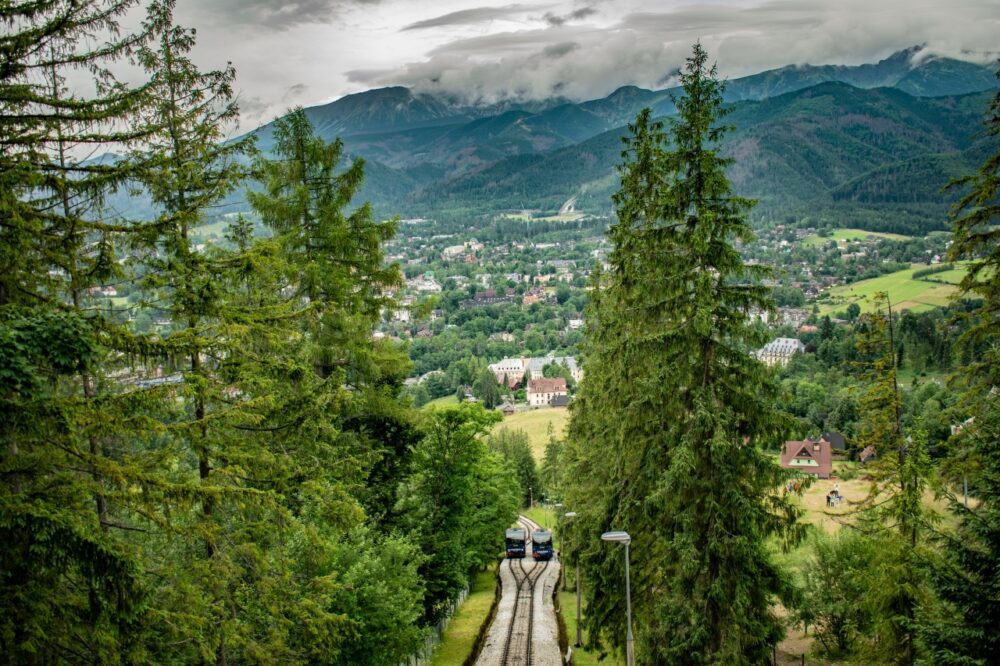
If you want to see Zakopane from above without a strenuous hike, the Gubałówka Funicular is the perfect option. This short but scenic ride takes you to the top of Gubałówka Hill, where you’ll be rewarded with one of the best panoramic views of the Tatra Mountains.
I took the funicular in the late afternoon, and the view from the top was breathtaking, with the golden light of the sunset casting a glow over the mountain peaks. At the summit, there are cafés, souvenir stalls, and even a small ski area in winter. It’s an easy and accessible way to experience Zakopane’s stunning scenery.
7. A Great Base for Exploring the Tatra National Park
Zakopane is the gateway to Tatra National Park, one of Poland’s most beautiful protected areas. The park is home to dramatic peaks, deep valleys, glacial lakes, and diverse wildlife, making it a must-visit for nature lovers.
I spent a day exploring the Chochołowska Valley, one of the park’s most scenic areas, where I saw wildflowers, waterfalls, and even signs of bears (though thankfully, I didn’t run into one). The park’s trails are well-marked, and many are accessible even for casual walkers. Whether you’re looking for a relaxed nature walk or a challenging mountain trek, Tatra National Park has it all.
8. The Thermal Baths are a Perfect Way to Relax
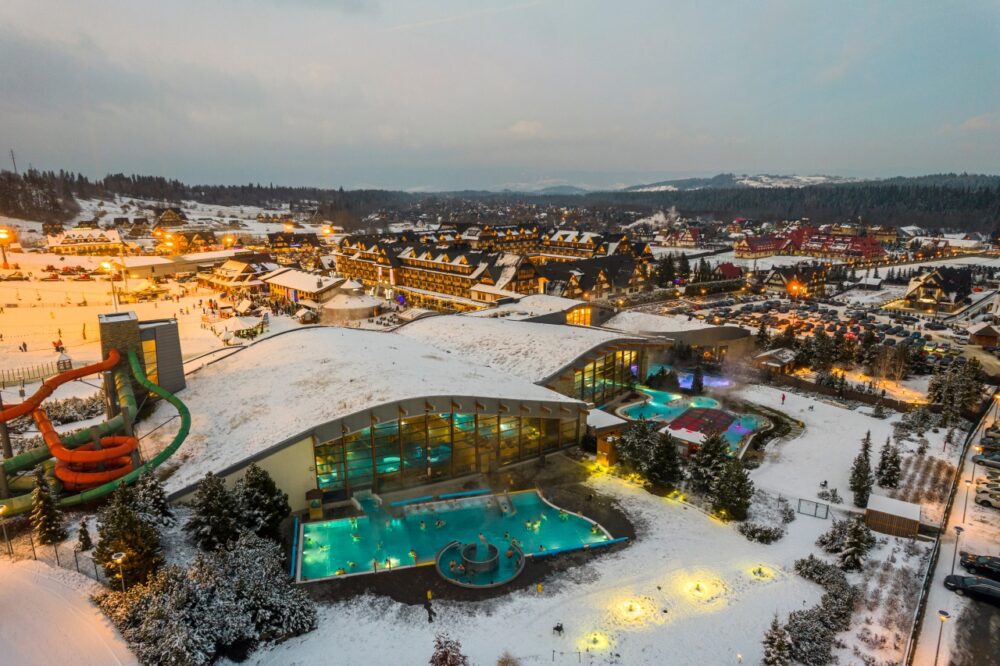
After a long day of hiking or skiing, there’s nothing better than soaking in a warm thermal bath. Zakopane and its surrounding area are home to several geothermal spas where you can relax in mineral-rich waters while enjoying mountain views.
I visited Termy Bukovina, a large thermal complex with outdoor and indoor pools, saunas, and Jacuzzis. Sitting in a steaming hot pool while looking up at the snow-covered mountains was pure bliss. Whether you want a romantic spa experience or a fun family outing, the thermal baths in and around Zakopane are a great way to unwind.
9. A Vibrant Market Scene with Unique Handicrafts
Zakopane’s markets are the perfect place to shop for traditional highlander crafts, handmade souvenirs, and locally produced food. The best-known market is at the base of Gubałówka, where you’ll find everything from fur hats and woolen socks to wooden kitchenware and mountain honey.
I picked up a hand-carved wooden spoon and a bottle of local raspberry liqueur, both of which made for unique and authentic souvenirs. The market is also a great place to grab a quick snack, like grilled oscypek cheese or fresh mountain bread. It’s a lively and colorful spot that gives you a real taste of Zakopane’s culture.
10. A Unique and Romantic Destination in Any Season
Zakopane is one of those rare destinations that feels magical in every season. In winter, it becomes a snowy wonderland with twinkling lights, roaring fireplaces, and charming wooden cabins. In summer, the meadows are lush and green, and the hiking trails are at their best. Spring brings blooming wildflowers, while autumn transforms the mountains into a sea of golden and red leaves.
I visited in late autumn, and the combination of crisp air, golden trees, and misty mountains made for an incredibly romantic atmosphere. Whether you’re planning a family trip, a honeymoon, or a solo adventure, Zakopane’s charm and beauty make it a destination you’ll never forget.
Cons – Things to Consider When Visiting Zakopane
1. Zakopane Can Get Extremely Crowded, Especially in Peak Season
While Zakopane’s natural beauty and outdoor activities attract visitors year-round, this also means that the town can become very crowded, particularly during the peak winter and summer seasons. The influx of tourists can lead to long lines, packed hiking trails, and heavy traffic, making it harder to fully enjoy the peaceful mountain setting.
I visited during the winter holidays, and Krupówki Street, the main pedestrian area, was so packed with people that moving through the crowds felt more like navigating a big city than a mountain retreat. The funicular to Gubałówka had long queues, and finding a table at a good restaurant without a reservation was nearly impossible. If you prefer a quieter experience, visiting in the shoulder seasons—late spring or early autumn—is a much better option.
2. Accommodation Prices Can Be High During High Season
Although Zakopane is more affordable than many Western European mountain resorts, prices for hotels and guesthouses can spike dramatically during peak travel seasons. The demand for accommodation, particularly around Christmas, New Year’s, and summer, often results in fully booked hotels and inflated prices.
I struggled to find reasonably priced lodging when booking last-minute for a December trip, as most budget-friendly options were already taken. Even small family-run guesthouses raised their prices significantly. To get the best deals, it’s essential to book well in advance or consider staying slightly outside the main town, where rates tend to be lower.
3. Traffic and Public Transport Can Be a Challenge
Zakopane’s growing popularity has put a strain on its infrastructure, leading to frequent traffic jams, especially on weekends and holidays. The main road leading into town from Kraków, the Zakopianka, is notorious for long delays, and once in Zakopane, finding parking can be frustrating.
I took a bus from Kraków to Zakopane on a Friday afternoon, expecting a two-hour journey, but ended up stuck in traffic for over four hours. Once in town, I noticed that parking spaces were limited and expensive, with many tourists resorting to leaving their cars far from the center. While buses and minibuses operate within the region, schedules can be inconsistent, making it tricky to rely on public transport for day trips.
4. Overcommercialization Has Taken Away Some of the Authenticity
While Zakopane still retains much of its traditional highlander charm, parts of the town, especially Krupówki Street, have become overly commercialized. Souvenir shops, chain restaurants, and tourist traps dominate the main pedestrian area, sometimes overshadowing the genuine cultural heritage of the region.
Walking down Krupówki, I noticed a mix of beautifully preserved wooden buildings alongside neon-lit stores selling mass-produced souvenirs. While there were still authentic local craft shops and traditional restaurants, some areas felt more like a theme park for tourists rather than a true mountain village. For a more authentic experience, it’s worth venturing beyond the main strip to discover quieter, less touristy parts of Zakopane.
5. Weather Conditions Can Be Unpredictable and Harsh
Due to its high-altitude location, Zakopane’s weather can be highly unpredictable. Sudden changes in temperature, heavy snowfall in winter, and frequent rain in summer can make outdoor activities challenging. Hikers, in particular, need to be prepared for rapidly shifting conditions in the Tatra Mountains.
I planned a day hike to Morskie Oko in early September, expecting clear skies, but halfway through the trek, an unexpected rainstorm rolled in, making the path slippery and reducing visibility. In winter, blizzards can shut down roads and ski lifts, sometimes forcing visitors to change their plans. Checking the forecast before heading out and packing appropriate gear is crucial to making the most of your time in Zakopane.
When to Visit Zakopane
The best times to visit Zakopane depend on your interests. Winter (December to March) is perfect for skiing, snowboarding, and soaking in the town’s festive atmosphere. Summer (June to September) offers excellent conditions for hiking, with trails leading to breathtaking peaks and valleys like Morskie Oko and Gubałówka Hill. Spring and autumn are quieter but beautiful, with colourful foliage in autumn and blooming wildflowers in spring, ideal for those seeking fewer crowds and scenic tranquillity.
How to Get to Zakopane
The nearest airport to Zakopane is Kraków John Paul II International Airport (KRK), about 110 kilometres away. From Kraków, buses and minibuses run frequently to Zakopane, taking around 2-3 hours and offering a budget-friendly option. Alternatively, trains connect the two cities but are slower and less frequent. For those driving, the journey via the Zakopianka road offers scenic views but can be busy during peak seasons. Taxis and private transfers are convenient but more expensive options for reaching Zakopane.
Where to Stay in Zakopane
Zakopane offers a range of accommodation options to suit various budgets and preferences:
- Luxury: Krupówki Street or Nearby Hills – Stay close to the town’s lively centre or enjoy panoramic mountain views. Options include Aries Hotel & Spa, known for its upscale amenities and alpine charm, and Nosalowy Dwór Resort & Spa, offering luxury with a serene atmosphere.
- Mid-range: Gubałówka Area – Ideal for easy access to trails and the town centre. Consider Hotel Wersal or Villa Vita, both providing comfort and good locations.
- Budget: Peripheral Areas or Guesthouses – Affordable options like Willa Pod Bandera or cosy local guesthouses provide excellent value for travellers looking to save.
Getting Around Zakopane
Zakopane is compact and best explored on foot, particularly around the bustling Krupówki Street and nearby attractions. For reaching hiking trails and ski resorts, minibuses are the most convenient and affordable option, with frequent services departing from the main bus station. Cable cars and funiculars, like the Kasprowy Wierch cable car and Gubałówka funicular, provide access to higher altitudes and stunning views. Cycling is limited due to the mountainous terrain, but bike rentals are available for exploring flatter areas. Taxis and ride-sharing apps are also an option for short trips.
How Long to Spend in Zakopane
Three to four days is ideal for enjoying Zakopane’s highlights, including skiing or hiking in the Tatra Mountains, strolling along Krupówki Street, and visiting attractions like the Tatra Museum or Wielka Krokiew ski jump. This allows time to take a cable car ride to Kasprowy Wierch or a leisurely hike to Morskie Oko, one of Poland’s most beautiful lakes. With an extra day, consider exploring the thermal baths in nearby Chochołów. Zakopane’s mix of outdoor adventure, cultural charm, and breathtaking landscapes makes it a must-visit destination for nature lovers.
Conclusion
So, is Zakopane worth visiting? Absolutely! With its breathtaking mountain scenery, thrilling outdoor activities, and rich highland culture, Zakopane offers an unforgettable experience. Highlights like the Tatra National Park, the famous Gubałówka funicular, and the vibrant Krupówki Street make it a must-visit destination in Poland. While it can get crowded during peak seasons, the stunning views and unique atmosphere more than make up for it. If you’re ready to immerse yourself in Poland’s alpine paradise, start planning your trip to Zakopane today—you’ll fall in love with its charm!
